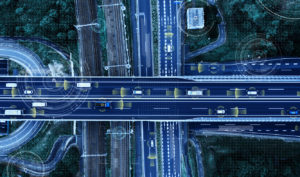Can You Promise to Be a Better Driver in 2020?

Automotive technology concept. ITS (Intelligent Transport Systems). ADAS (Advanced Driver Assistance System).
At the start of every year, resolutions are made to lose weight, get in shape, spend less, save more, etc. They are made to complete a project that has dragged on for months. They are made to tackle a goal that has lingered in the distance. And so forth and so on.
Such forward thinking pertains to change affecting the individual behind the idea. But what if resolutions were made affecting others? Resolving to be a better driver, for example, has the potential to positively affect everyone on the road, reduce personal injuries and lower the number of deaths from accidents.
“2020 has arrived and many are carefully selecting New Year’s Resolutions,” U.S. Department of Transportation (DOT) Secretary Elaine Chao said in an agency blog. “Establishing challenging yet achievable goals is the essence of New Year’s Resolutions, a tradition that dates back 4,000 years to the ancient Babylonians. While participating in this timeless tradition, I would like to promote a resolution that everyone can do together in 2020: Safer driving.”
Chao said thousands of lives could be saved and hundreds of thousands of injuries could be prevented if drivers buckle up, slow down and avoid distractions.
“Traffic safety efforts at the Federal, State and local levels are making a difference,” she said, noting that fatalities declined 2.4 percent in 2018, the latest year for which statistics are available. “Since 1972, annual traffic fatalities have declined 33 percent. This is a great achievement, especially considering that it occurred concurrently with a 156 percent increase in vehicle miles travelled. The fatality rate in 1972 was nearly four times higher than it is today. By resolving to be safer, smarter drivers, everyone can play a part in making America’s roads safer.”
Buckling up is the No. 1 action motorists can take to lessen their chances of injuries and/or death. The DOT reports that, of those killed in vehicle accidents, nearly half were not strapped in as they should have been.
“Seat belts are the best defense against impaired, aggressive, and distracted drivers,” according to an overview by the National Highway Traffic Safety Administration. “Being buckled up during a crash helps keep you safe and secure inside your vehicle; being completely ejected from a vehicle is almost always deadly.”
Slowing down matters, too. The DOT reports that while fatalities related to speeding declined in 2018, one quarter of those fatalities involved speeding. As for avoiding distractions, the main culprit is “smart” phones, although there are a multitude of other reasons drivers do not pay attention.
“…distracted drivers are one of the greatest hazards on the roads today,” Hoesly Automotive in Vancouver, Wash., states on its Web site. “And it’s not just texting that’s dangerous. People get distracted by all kinds of things, including the radio, eating, trying to multitask while driving, checking their GPS, taking pictures, and anything else that takes their focus from driving. So make it a goal to lose the distractions and stay focused on safe driving.”
Something as simple as common courtesy can improve outcomes on the road and prevent injuries from traffic accidents.
“…why is it that perfectly normal people who are kind in any other setting can turn into raging monsters when they get behind the wheel of a vehicle?” Hoesly Automotive asks. “Road rage is a serious issue, but much of it could be eliminated if drivers were more courteous to one another. You can do your part by being more patient. It also helps to give yourself more time to get where you’re going so you can avoid the stress of being late.”
Turn signals are there for a reason, yet many drivers fail to use them. Why? A reader of the Allentown, Penn.-based Morning Call sarcastically supplied an answer.
“I think people need to go to the gym more often in order to build up the strength in their left arm and fingers so that they have the strength to move them a few inches to use their turn signals,” resident Jim Altenbach said. “I realize it’s a tough task.”
Reporter Tom Shortell posted Altenbach’s comment in an article titled “Your New Year’s resolutions for Lehigh Valley drivers: Use your turn signals, learn to merge, be more patient.”
“As readers pointed out, turn signals are crucial for public safety,” Shortell wrote. “A key aspect of driving is maintaining an appropriate space between you and other cars. If you plan on braking suddenly to turn, the driver behind you needs to know ahead of time to react. If you plan on changing lanes, the cars around you don’t want to find out the hard way. Using your turn signal may be the simplest part of driving, and it makes life on the road so much easier for the people around you. It shouldn’t need explaining.”
Also, stop means, well,…stop! Not roll through briskly, slowly or while looking real carefully. Stopping at a stop sign, for example, is at least a 3 to 4 second event, with a complete stop of the vehicle. It includes courtesy, such as yielding to the person on your left when you reach a four-way stop at roughly the same time. And, a yellow light at an intersection means prepare to stop to the extent you are not so close you have skid through the intersection. A yellow light does not mean accelerate 20 or 20 miles per hour faster so you can make it through (hopefully) the intersection.
It is about keeping everyone safe on the roads; avoiding causing injuries; avoiding suffering injuries; and arriving alive.
For more suggestions on resolving to be a better driver, click here.
Share This


